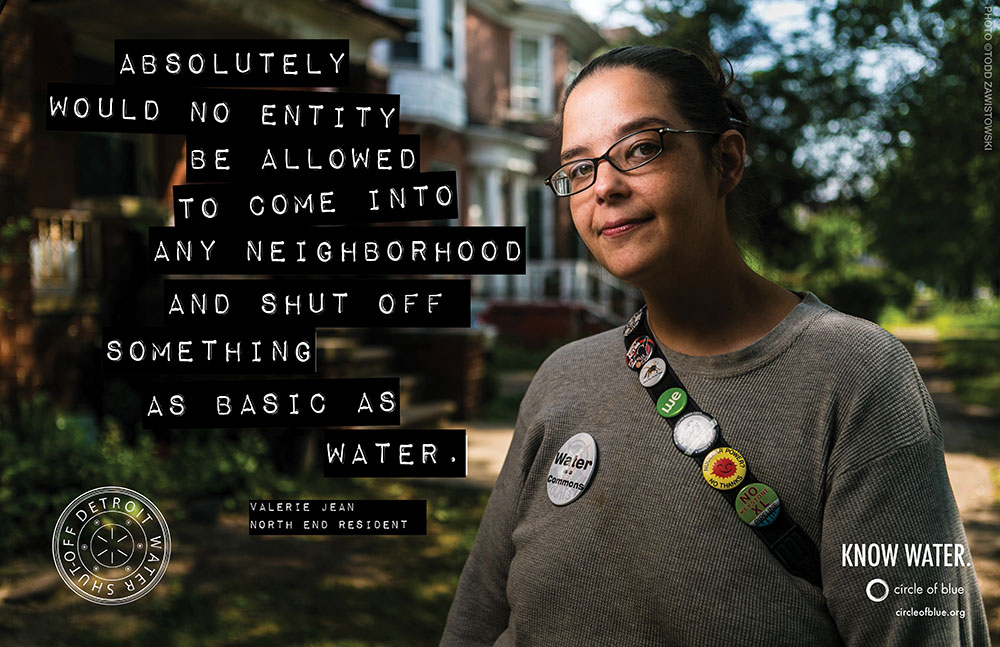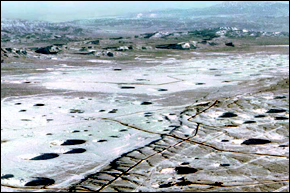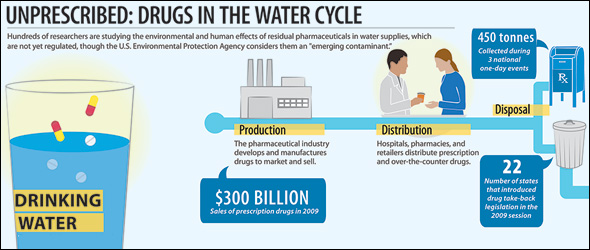Septic Systems Contaminate Drinking Water Wells on Cape Cod
Pharmaceuticals, flame retardants, and other organic compounds found in small concentrations in household drinking water.
By Brett Walton
Circle of Blue
Cape Cod, the hooked arm of land that flexes eastward from mainland Massachusetts, is the iconic New England vacation spot. Less glamorously, it is also the perfect laboratory to study the relationship between wastewater and groundwater contamination.
The peninsula, whose population of 215,000 more than doubles during the summer, has tight clusters of septic systems and shallow household drinking water wells. Both are placed, on the same parcel of land, in sand and gravel soils through which water easily flows. Combined, it is a recipe for contamination. That is exactly what researchers at the Silent Spring Institute have found.
They tested 20 household drinking water wells for 117 organic compounds in an area that uses exclusively septic systems or cesspools, which are backyard means of disposing toilet waste and water that goes down drains. The organic compounds are pharmaceuticals, personal care products, sweeteners, and certain chemicals used to stop fire. In the well water, the researchers detected 27 of the compounds, some of which have been found to interfere with hormonal development and reproduction in fish species. Health guidelines exist for only 10 of the compounds they detected.
The study was published on January 27 online in the journal Science of the Total Environment.
“Septic systems were not designed to remove these contaminants,” Laurel Schaider, a research scientist and lead author of the study, told Circle of Blue. “In dense areas, many people are downstream of someone else’s septic system.”
A 2014 study from Silent Spring found similar contaminants in wells used by public drinking water systems.
Household drinking water wells are particularly vulnerable to septic system pollution. Well owners, unlike operators of public drinking water systems, are not required to test their water for contaminants. Household wells serve 14 percent of the U.S. population, more than 44 million people.
Finding the Medicine Cabinet in Groundwater
There is a well-established connection between septic systems and nitrate and bacterial pollution in drinking water wells. This causes problems. Two-thirds of disease outbreaks in the United States due to untreated groundwater in the last four decades were linked to septic systems or a poorly designed well, according to the Centers for Disease Control and Prevention.
Schaider and her colleagues, however, were looking for a different type of contaminant on Cape Cod. Pharmaceuticals, flame retardants, and other similar compounds are known as “emerging” contaminants because their health effects are only beginning to be studied and few have federal drinking water standards.
Schaider was careful to note that the concentrations they detected — none of which exceeded health guidelines — were tiny, in the parts-per-billion range, which is thousands or millions of times lower than a medical dose. Even so, the cumulative, long-term effect of drinking water with low pharmaceutical concentrations, especially for children or pregnant women, is poorly understood.
“There are health concerns about the interaction of different chemicals in the body,” Schaider said.
Remedies
What is a town or a homeowner to do? More than eight out of 10 homes on Cape Cod uses a septic system or cesspool and one in five uses a household well.
Gathering more information about well water quality is one recommendation. That information, however, is expensive. Schaider said that analyzing one water sample for the 117 contaminants in her study cost $US 1,800.
“It’s not routine testing that everyone can do,” she said.
The researchers looked for a shortcut that might help homeowners. They analyzed the relationship between different contaminants, to see if the presence of one could indicate the presence of others. Nitrate, which is not removed by traditional septic systems, was a suitable though imperfect match — imperfect because agriculture runoff is also a large source of nitrate pollution. Testing for nitrate is much cheaper, roughly $US 20 per sample.
Other recommendations involve more effort. Local ordinances that require a certain distance between septic systems and household wells could be revised, Schaider said. Or, instead of continuing to build individual wells, new developments could drill a community well to supply many homes. The well would be strategically located away from septic system runoff.
That option, of course, does nothing to address the root cause of the pollution, which is the septic system itself. Some communities on Cape Cod are experimenting with new treatment techniques, but more will be needed. Roughly one in five U.S. households uses a septic system.
Brett writes about agriculture, energy, infrastructure, and the politics and economics of water in the United States. He also writes the Federal Water Tap, Circle of Blue’s weekly digest of U.S. government water news. He is the winner of two Society of Environmental Journalists reporting awards, one of the top honors in American environmental journalism: first place for explanatory reporting for a series on septic system pollution in the United States(2016) and third place for beat reporting in a small market (2014). He received the Sierra Club’s Distinguished Service Award in 2018. Brett lives in Seattle, where he hikes the mountains and bakes pies. Contact Brett Walton













Leave a Reply
Want to join the discussion?Feel free to contribute!